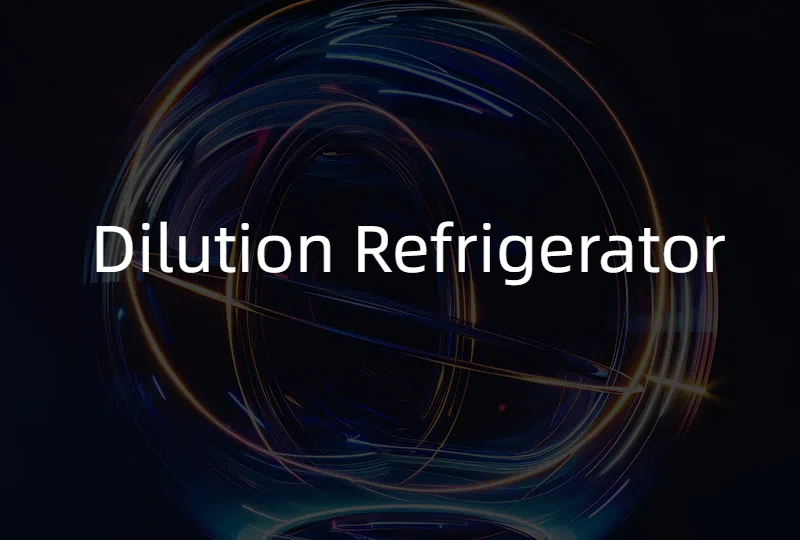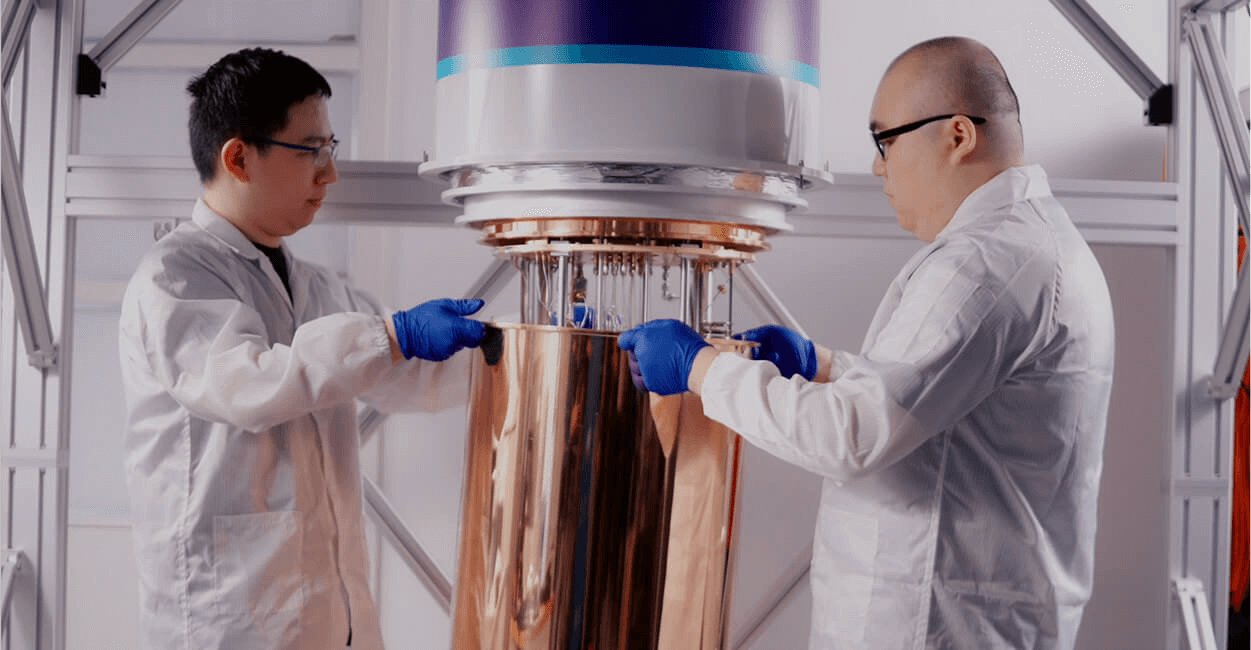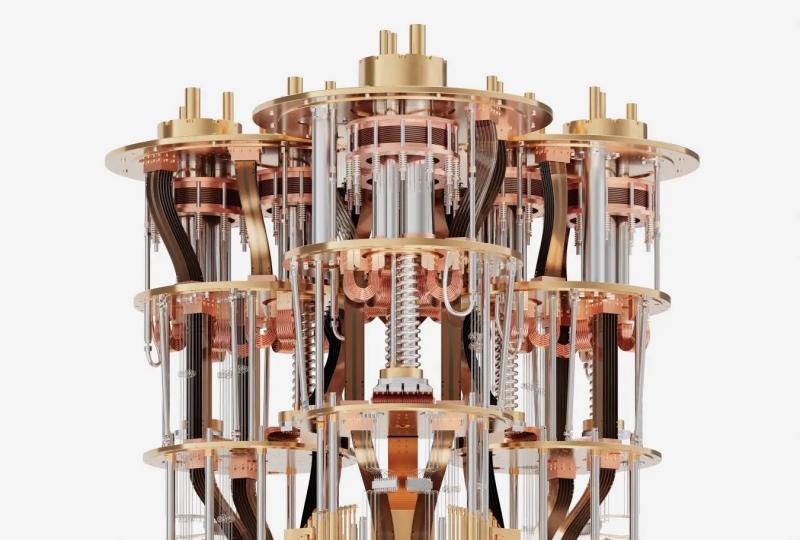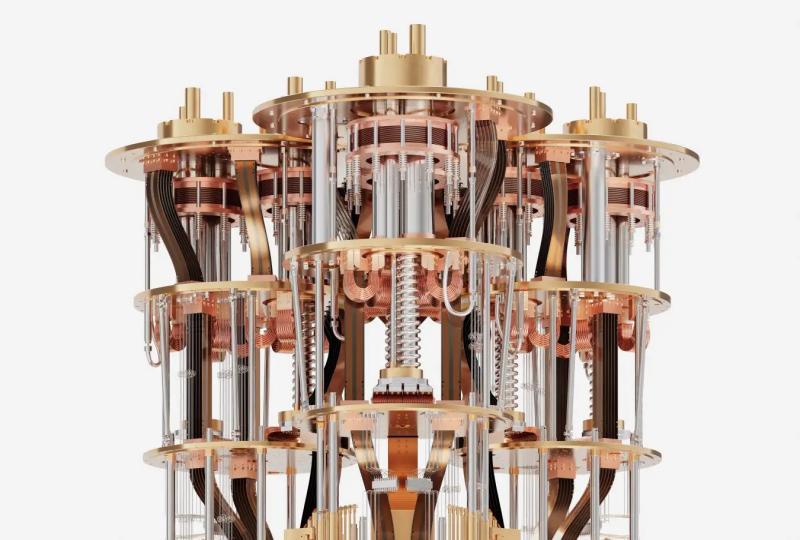Dilution Refrigerator: Everything You Need to Know [2025]
2025.05.30 · Blog dilution refrigerator
Behind every quantum computer operating at the edge of physics lies a powerful yet invisible hero: the dilution refrigerator. These advanced cooling systems are essential for reaching the near-absolute-zero temperatures that quantum bits—or qubits—require to function with stability and precision.
But what exactly is a dilution refrigerator? How does it achieve such extreme cold? And why is it indispensable in the world of quantum computing?
In this guide, we'll break down everything you need to know—from how dilution refrigerators work, to their role in cutting-edge technologies, to practical considerations like power consumption and cost. Whether you're a researcher, an engineer, or just curious about how quantum computers stay cool, this article will take you deep inside one of modern science's coldest tools.

Brief History of Dilution Refrigerators
The concept of dilution refrigeration was first proposed in the 1950s as scientists explored new ways to reach temperatures below those achievable by conventional cryogenic methods. The breakthrough came in 1965, when researchers successfully demonstrated the first working dilution refrigerator using a mixture of helium-3 (³He) and helium-4 (⁴He) isotopes.
This technique opened a new frontier in ultra-low temperature physics, allowing systems to reach below 10 millikelvin (mK). Over the following decades, dilution refrigerators evolved from custom-built lab setups to sophisticated, commercially available instruments, becoming a cornerstone in fields like condensed matter physics and, more recently, quantum computing.
Today, dilution refrigeration remains the most reliable and widely used method for achieving millikelvin-range temperatures essential for operating superconducting qubits and other quantum devices.
What is a Dilution Refrigerator?
A dilution refrigerator is a specialized cryogenic device designed to achieve ultra-low temperatures, typically in the millikelvin (mK) range—just thousandths of a degree above absolute zero. It operates by exploiting the quantum properties of a mixture of two helium isotopes: helium-3 (³He) and helium-4 (⁴He).
Unlike traditional refrigeration systems, which rely on compression-expansion cycles of gases, dilution refrigerators use a quantum mechanical process called phase separation that occurs at extremely low temperatures. When ³He is diluted into ⁴He, the process absorbs heat, effectively cooling the system to unprecedented levels.
Dilution refrigerators are essential for studying quantum phenomena that only emerge at these near-zero temperatures, making them a fundamental component in cutting-edge quantum computing, superconductivity research, and low-temperature physics.
Temperature Achieved by Dilution Refrigerators
Dilution refrigerators can reach temperatures as low as 5 to 10 millikelvin (mK), or 0.005 to 0.01 Kelvin. To put that in perspective, these temperatures are colder than outer space, which sits around 2.7 K.
This extreme cooling is necessary to suppress thermal noise and stabilize quantum states, particularly for superconducting qubits in quantum computers. Many state-of-the-art systems operate at or below 20 mK, and newer research platforms aim for even lower temperatures to extend coherence times and reduce quantum decoherence.
Power Consumption of Dilution Refrigerators
While dilution refrigerators achieve near-absolute-zero temperatures, they don't consume high electrical power directly for cooling. Instead, they rely on a continuous flow of helium isotopes and a combination of vacuum pumps, circulation pumps, and heat exchangers.
The primary power consumption comes from:
-
Vacuum pumps (typically 1–3 kW each)
-
³He/⁴He gas circulation systems
-
Pre-cooling systems (such as pulse tube coolers, often consuming 2–6 kW)
In total, a typical lab-scale dilution refrigerator system may require 5–10 kW of electrical power. In large-scale systems, like those used in quantum computing data centers, consumption can be higher due to more advanced cryogenic stages and redundant cooling for stability and uptime.
How Does a Dilution Refrigerator Work?
A dilution refrigerator works by using a quantum mechanical process involving two isotopes of helium—helium-3 (³He) and helium-4 (⁴He)—to extract heat and achieve extremely low temperatures, typically in the millikelvin range. Its cooling mechanism does not rely on traditional refrigerants or compression cycles, but rather on the entropic behavior of helium mixtures at low temperatures.
Here's a simplified breakdown of the core process:
1. Pre-cooling stage
Before dilution begins, the system is pre-cooled to a few kelvin (usually around 3–4 K) using a pulse tube refrigerator or another cryocooler. This reduces the thermal load and brings the helium mixture to a suitable starting point for dilution.
2. Phase separation of ³He and ⁴He
At temperatures below about 0.87 K, a mixture of ³He and ⁴He spontaneously separates into two distinct phases:
-
A concentrated phase, rich in ³He
-
A dilute phase, mostly ⁴He with a small amount of dissolved ³He
This phase separation creates a boundary within the mixing chamber.
3. Cooling via dilution
When ³He atoms cross from the concentrated phase into the dilute phase, the process absorbs energy (heat)—this is the essence of cooling in a dilution refrigerator. The heat taken from the system lowers the temperature even further, often below 10 millikelvin.
This cooling is continuous, provided there is a steady supply of ³He and the system is properly maintained.
4. ³He circulation
After absorbing heat, the ³He atoms are extracted from the dilute phase using vacuum pumps and sent back to the concentrated phase through heat exchangers. These exchangers pre-cool the incoming ³He with the outgoing stream, improving efficiency.
This closed-loop circulation enables continuous operation for days or even weeks at ultra-low temperatures.
Applications of Dilution Refrigerators
Use in Quantum Computers
One of the most significant and fast-growing applications of dilution refrigerators is in the operation of quantum computers, particularly those based on superconducting qubits—used by companies like Google, IBM, and SpinQ.
Superconducting qubits must be operated in extremely low-temperature environments to function correctly. Even small amounts of thermal noise can lead to qubit decoherence, which disrupts quantum computation. Dilution refrigerators provide the ideal cryogenic conditions, typically in the 10–20 millikelvin (mK) range, where:
-
Superconductivity can be sustained with minimal resistance.
-
Qubits maintain coherence for longer durations.
-
Quantum gates operate with higher fidelity.
Why Cryogenic Temperatures Are Needed for Qubits
At room temperature, quantum states are highly unstable due to thermal energy that causes rapid decoherence. Operating qubits at millikelvin temperatures minimizes:
-
Thermal noise, which can excite qubits out of their ground state.
-
Unwanted interactions with the environment.
-
Losses in superconducting circuits, which must exhibit zero electrical resistance.
In essence, dilution refrigerators make quantum computing possible by creating an environment where fragile quantum states can be initialized, manipulated, and read with precision.
Also Read: Why Do Quantum Computers Need to Be Cold? Explained [2025]
Other Scientific and Industrial Applications
Beyond quantum computing, dilution refrigerators are critical tools in various advanced scientific and industrial fields:
-
Condensed Matter Physics: For studying phenomena like quantum Hall effects, superconductivity, and topological materials.
-
Nanoelectronics: In experiments involving single-electron transistors, nanowires, and other quantum-scale devices.
-
Astrophysics and Cosmology: For ultra-sensitive detectors in cosmic microwave background radiation experiments and dark matter searches.
-
Low-Temperature Thermometry: Development and calibration of thermometers that work accurately in the millikelvin range.
-
Quantum Sensing & Metrology: Enabling next-generation sensors that operate near the quantum limit, such as SQUIDs (Superconducting Quantum Interference Devices).
The World's Largest Dilution Refrigerator
In recent years, two remarkable cryogenic systems have drawn global attention in the race toward ultra-low-temperature infrastructure for quantum computing: Fermilab's Colossus and IBM's Goldeneye. Both have been described as “the world's largest dilution refrigerator,” but the definition of “largest” can vary depending on the criteria used — such as cooling volume, cooling power, or operational purpose.
Colossus: A True Giant in Volume and Capability
Colossus, currently under construction at Fermilab (Fermi National Accelerator Laboratory), is technically the largest dilution refrigerator ever built in terms of cooling volume. Expected to be fully operational in 2025, Colossus offers:
-
Cooling volume: Over 5 cubic meters at cryogenic temperatures (~10 millikelvin)
-
Cooling power: Capable of supporting hundreds to thousands of superconducting cavities and quantum devices
-
Purpose: Built to serve national-scale quantum research projects and large-scale superconducting quantum processors
This makes Colossus approximately 15 times larger than typical commercial dilution refrigerators, and significantly larger than any system ever deployed in a quantum lab. Its scale is not only symbolic but functional — it is designed to host future large-scale quantum computers and fundamental physics experiments requiring extremely stable cryogenic conditions.
IBM's Goldeneye: A Scalable Engineering Marvel
By contrast, IBM's Goldeneye was unveiled as a prototype system in 2021, showcasing innovations in modular design and maintenance efficiency. Key features of Goldeneye include:
-
Cooling volume: Approximately 1.7 cubic meters
-
Operating temperature: Reaches around 25 millikelvin
-
Design goal: Built as a flexible, serviceable platform to test future generations of quantum processors
Goldeneye is not intended for current commercial deployment but serves as a testbed for IBM's cryogenic engineering, especially as quantum processors scale up in complexity. It is noteworthy for being the largest cryogenic system IBM has ever constructed, and its design may influence future commercial quantum systems.
Which Is Truly the “Largest”?
-
Volume and Capacity: Fermilab's Colossus leads with unmatched physical and thermal capacity.
-
Industrial Design Innovation: IBM's Goldeneye pioneers scalable and modular cryogenic architecture.
In summary, Colossus is the largest by scale and scientific capability, while Goldeneye represents a leap in cryogenic design strategy. Both mark critical milestones in the journey toward scalable quantum computing infrastructure.
Need Cryogenic Environment Deployment Services for Superconducting Quantum Computers?
SpinQ offers comprehensive cryogenic environment deployment services and quantum computing solutions, including consultation on the selection, supply, maintenance, the upgrade of dilution refrigerators and other necessary components.
SpinQ aims to ensure a stable and high-performance quantum experimental environment for our users.

FAQs
What is the lowest temperature in a dilution refrigerator?
A dilution refrigerator can reach temperatures as low as 5 to 10 millikelvin (mK) — that's 0.005 to 0.01 Kelvin, just above absolute zero. For comparison, that's just 0.01°C above −273.15°C — the coldest temperature theoretically possible.
What is the heat switch in a dilution refrigerator?
A heat switch is a device that controls thermal contact between stages of the refrigerator. During cooldown, it allows heat to flow efficiently to lower temperature stages. Once the desired temperature is reached, the switch thermally isolates components to maintain ultra-low temperatures. It's critical for efficient and stable operation.
How much does a dilution refrigerator cost?
The cost of a dilution refrigerator varies widely depending on size, cooling power, and customization. A standard research-grade system typically ranges from $300,000 to over $1 million USD. Large-scale or highly specialized systems — like those used in quantum computing — can cost significantly more.
Featured Content






